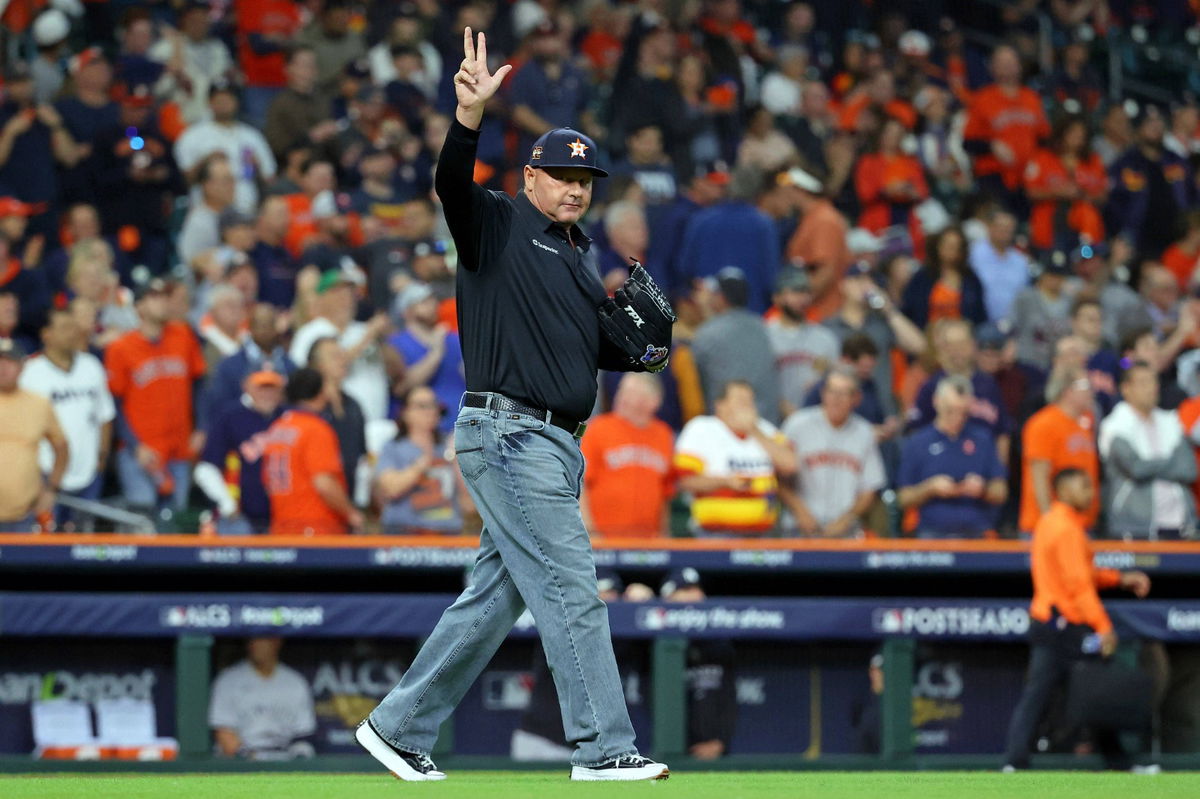
Imago
Credit IMAGO / Imagn Images

Imago
Credit IMAGO / Imagn Images
Baseball has survived steroids, spider tack, and the invention of the pitch clock, but now MLB might face its boldest curveball yet—from Roger Clemens, of all people. The Rocket isn’t lobbying for softer mounds or juiced balls; he’s pitching a rule that could flip dugout strategy on its head. His idea sounds revolutionary on paper, but in practice? That’s where the seams start to split.
Watch What’s Trending Now!
MLB has long experimented with its rulebook, reshaping the game to maintain entertainment value and competitive balance. The introduction of the pitch clock, limits on pickoff throws, and even larger bases highlight an era obsessed with efficiency. Soon, MLB plans to test automated strike zones with a challenge system, emphasizing accuracy and fairness over tradition. The league’s direction is unmistakable: shorter games, more offense, and fewer mistakes, despite fans’ split opinions. Yet Roger Clemens, while admiring some updates, has drawn his line in the dirt.
The seven-time Cy Young winner argues that starting pitchers no longer shoulder the responsibility once demanded of them. Managers frequently pull their starters after four innings, even when arms are strong, chasing favorable matchups instead.
ADVERTISEMENT
Clemens’ solution is radical but straightforward: tie the designated hitter to the starter’s presence on the mound. ““If you want to stop these guys going three or four innings, looking over their shoulder, you tie your DH to your starting pitcher,” he said on YES Network broadcast during Old-Timers’ Day. “If your starting pitcher comes out [of] the game before the seventh inning, you lose your DH. And that’ll change that.”
On paper, the “DH-penalty” rule offers an ingenious incentive to protect MLB’s vanishing workhorses. But in reality, it collides with the modern game’s reliance on data-driven flexibility. Every manager today values bullpen matchups, pitch counts, and avoiding the dreaded third time through the order. Forcing them to risk a lineup anchor simply to squeeze innings could ignite significant backlash. MLB thrives on strategy, and this proposal undermines the chess match by imposing a single rigid condition.
The bigger flaw emerges with injury management and pitcher health in an era of multimillion-dollar contracts and fragile arms. Teams already build carefully tailored plans to limit workloads, especially after injuries or during early-season stretches. A rule like Clemens’ could pressure clubs to leave compromised pitchers in games unnecessarily, heightening the risk of serious setbacks. The Yankees and Mets have already been criticized for bullpen overuse, but forcing unhealthy starters deeper is worse. Instead of durability, the result might be an injury epidemic disguised as old-school grit.
ADVERTISEMENT
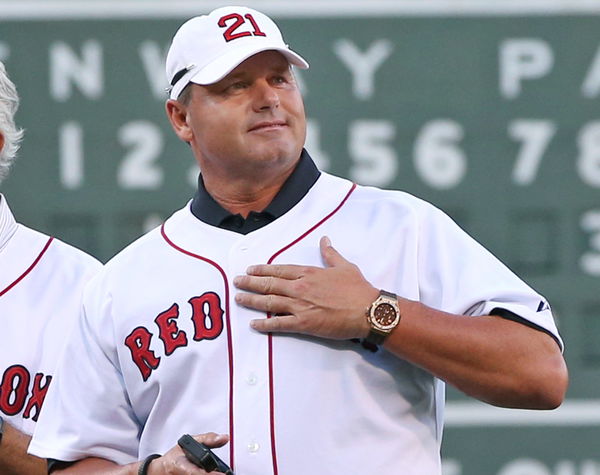
Imago
Former Boston Red Sox pitcher Roger Clemens pats his chest to cheering fans during a ceremony prior to a baseball game between the Red Sox and the Seattle Mariners at Fenway Park in Boston on Tuesday, July 30, 2013. The Red Sox are celebrating the 25th anniversary of a streak in 1988 that began after Joe Morgan became manager of the team. (AP Photo/Elise Amendola)
Roster construction and locker room dynamics would only complicate matters further, widening competitive gaps rather than closing them. Wealthy teams with stacked bullpens could adapt easily, hiding the DH loss by overwhelming opponents with relievers. Meanwhile, teams reliant on fragile rotations would be disproportionately punished, losing their most dangerous bats whenever starters faltered. Imagine the Yankees suddenly losing Aaron Judge after an early Luis Gil exit—it punishes hitters more than pitchers. That imbalance would distort competition, rewarding certain roster designs and crippling others unfairly.
ADVERTISEMENT
To illustrate the chaos, consider a late August showdown between the Yankees and Astros under Clemens’ proposed rule. Luis Gil surrenders four runs in the third inning, prompting Aaron Boone to reluctantly remove him. Under the penalty, Aaron Boone loses Aaron Judge as the designated hitter, drastically weakening New York’s offense. Their bullpen cruises, while Yankees fans question why their best slugger is punished for bad pitching. Instead of encouraging competitiveness, the rule transforms classic MLB games into mismatches decided by early pitching failures.
Even Roger Clemens himself admits admiration for modern tools like the pitch clock and automated strike zone challenges, noting, “It only takes two seconds.” His frustration stems less from new rules and more from watching starters abandoned too early. But nostalgia cannot override practicality, and the DH-penalty concept feels stuck in a bygone baseball reality. Injury risks, managerial rigidity, and competitive imbalance make it a nonstarter in today’s MLB. The pitch is destined to be missed by the strike zone entirely, despite the fire of the Rocket.
ADVERTISEMENT
New MLB rules might be coming, but will they be implemented?
Baseball has never lacked ambition when it comes to rewriting its own rulebook, but ambition often collides with reality. MLB loves its shiny experiments—the pitch clock stuck, larger bases survived, and robo-umps are waiting in the wings. Yet every bold idea comes with landmines, from player safety to managerial outrage. And if Roger Clemens’ “DH-penalty” fantasy proved anything, it’s that not every brainstorm deserves a ballot.
MLB has already seen positive changes from recent rule adjustments, enhancing pace and action. The pitch clock, defensive shift ban, and larger bases created a faster, more exciting fan experience. Now, the league is testing an Automated Ball-Strike challenge system, drawing curiosity and cautious optimism from players. Clayton Kershaw noted strike zone fairness concerns, stressing that Aaron Judge and Jose Altuve deserve differently calibrated boxes.
Top Stories
Rift in Phillies Clubhouse as Dave Dombrowski Punishes Bryce Harper Teammate in “Worst Trade” Fallout, Says Insider
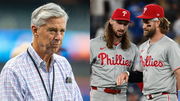
MLB Signings: 5 Teams That Must Sign Kyle Tucker, Bo Bichette & Alex Bregman

Mark Shapiro Rubs Salt in Yankees’ Wounds as He Issues Stark Ultimatum to Blue Jays Clubhouse

Juan Soto Disproves Carlos Mendoza’s Claim for National Duty as Mets Gamble Big Ahead of 2026 Season
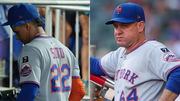
Blue Jays Confirmed to Land MLB’s “Big Fish” After Mark Shapiro Fires Bold Message to Clubhouse, per Insider
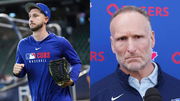
Despite these innovations, MLB faces looming broadcast uncertainty that could slow its current surge in popularity. The ESPN deal, critical for decades, expires soon with no clear replacement agreement finalized. Commissioner Rob Manfred wants more national exposure, but delivery method debates—streaming or over-the-air—create significant questions. Fans may see fewer games available, which risks undermining recent momentum and audience trust.
ADVERTISEMENT
The other potential storm cloud arrives in 2026, when the collective bargaining agreement expires between owners and players. Owners will push hard for a salary cap, seeking to restructure payroll distribution across franchises. The players’ union, however, remains strongly opposed, warning labor disputes could erase recent growth and goodwill. Tony Clark emphasized the game’s strength, urging continued building instead of regressive battles harming baseball’s thriving resurgence.
Baseball may tinker with strike zones and streaming contracts, but its real opponent is self-sabotage. Kershaw’s plea for fair boxes and Clark’s warnings about regression echo louder than Manfred’s optimism. If the commissioner fumbles, ESPN and the owners chase a salary cap, the pitch clock won’t save him. MLB’s future might not hinge on balls and strikes, but on whether common sense finally steps up to bat.
ADVERTISEMENT
ADVERTISEMENT
ADVERTISEMENT

